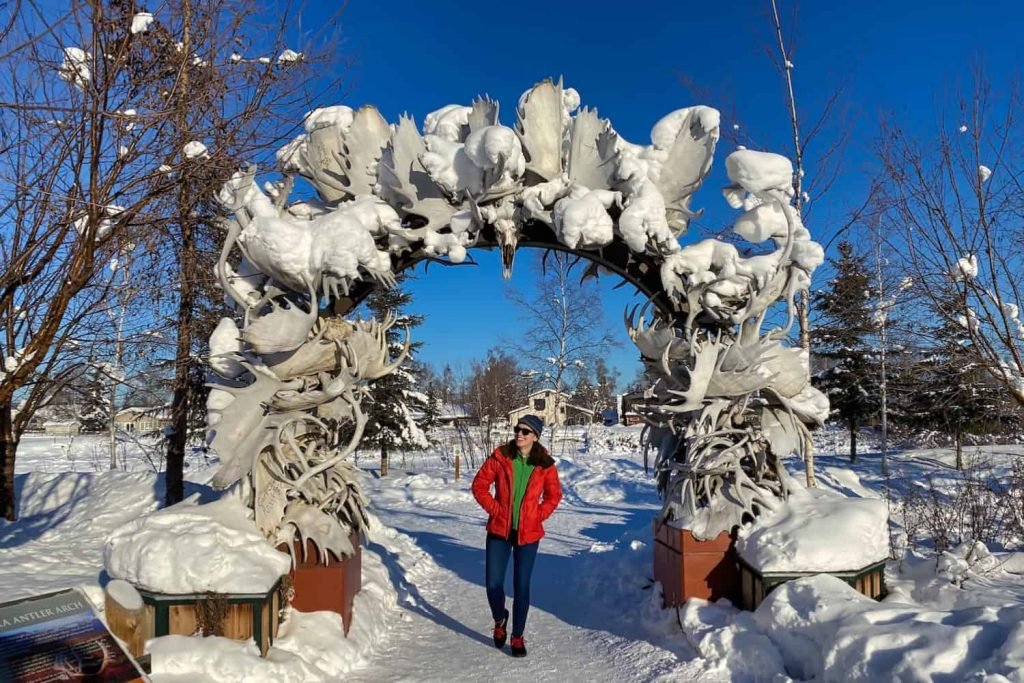Fairbanks is Alaska’s second-largest city and serves as the gateway to vast wilderness and the Arctic Circle. With its location in the interior region of Alaska, Fairbanks experiences extreme temperatures and daylight variation, making it a unique travel destination.
| No. | Attraction | Description |
|---|---|---|
| 1 | Creamer’s Field Migratory Waterfowl Refuge | A state refuge offering birdwatching and historical dairy barn tours. |
| 2 | Riverboat Discovery Sternwheeler | A cruise experience on the Chena River with local landmark sightseeing. |
| 3 | Denali Mountain Flightseeing | Air tours offering views of Denali National Park and its surroundings. |
| 4 | Pioneer Park | A historical park showcasing Alaska’s Gold Rush era with various exhibits. |
| 5 | Trans-Alaska Pipeline | Tours of the oil pipeline facilities, including an operations center visit. |
| 6 | Gold Dredge 8 | A historical dredge site with gold panning opportunities. |
| 7 | Performing Arts | Venues for music, theater, and performances in Fairbanks. |
| 8 | Chena River Sternwheeler Barge | A historic sternwheeler barge offering river cruises. |
| 9 | World Ice Art Championships | An ice sculpture event showcasing large, illuminated ice artworks. |
| 10 | Chena Hot Springs | Hot springs resort with a range of winter activities and an ice museum. |
| 11 | Boreal Forest Trails | Trails for hiking through colorful autumn foliage. |
| 12 | Northern Lights Viewing | Optimal conditions for viewing the Aurora Borealis. |
Summers are warm with near constant daylight while winters are freezing cold with very little sunlight. The city’s remote northern location also makes it one of the best places in Alaska to view the magical Northern Lights.
In addition to beautiful natural scenery and sights, Fairbanks offers a variety of cultural attractions, museums, historical sites, and exciting outdoor recreational activities for visitors. From panning for gold to learning about Alaska native heritage to cruising down rivers amidst boreal forests, Fairbanks has something for everyone. The following are 12 of the top attractions and things to do in and around Fairbanks, Alaska’s Golden Heart City.
Visit Creamer’s Field Migratory Waterfowl Refuge
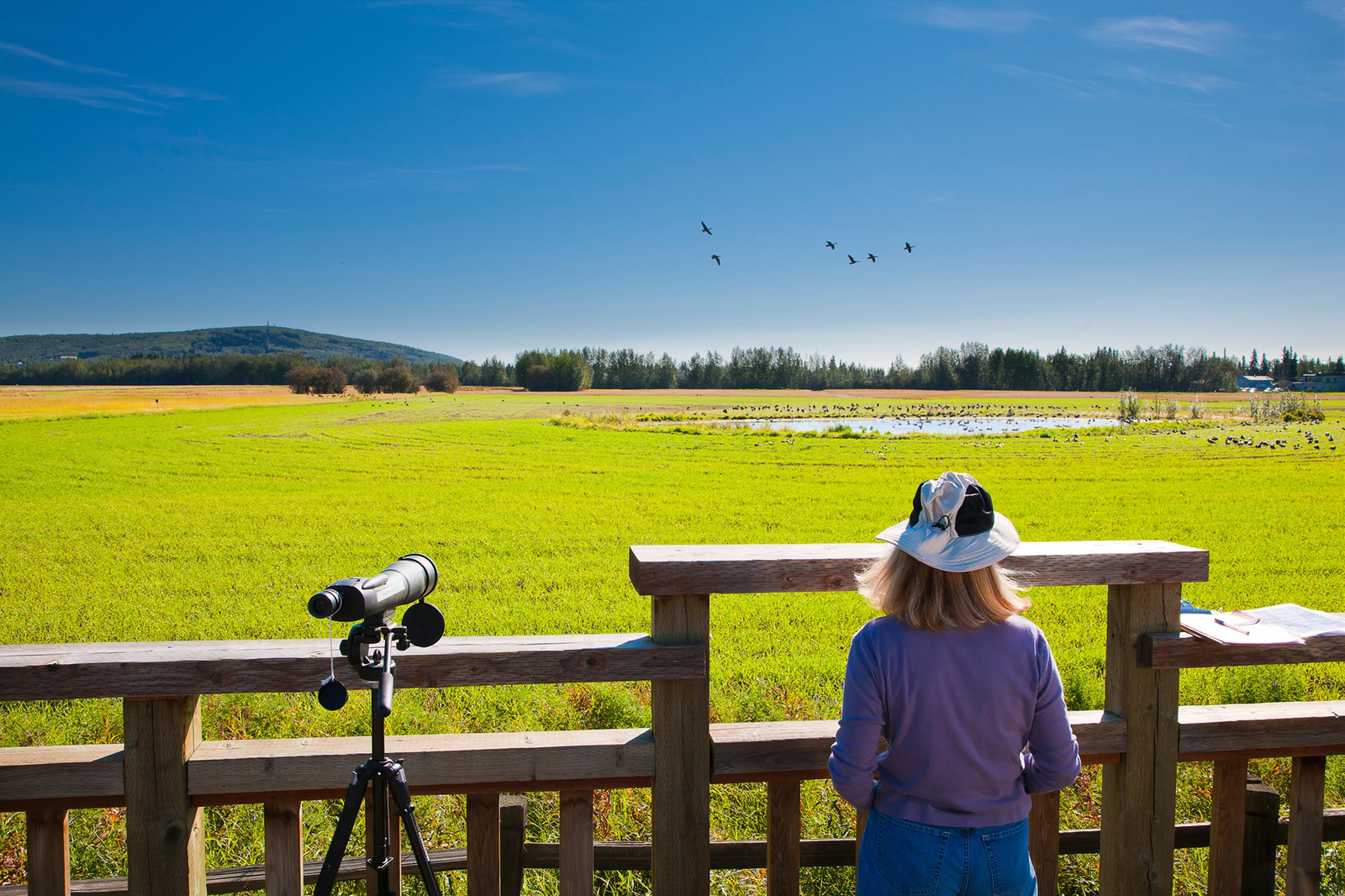
Name and Location: Creamer’s Field Migratory Waterfowl Refuge is located in Fairbanks, Alaska. It is a 2,000-acre refuge that serves as a resting and nesting spot for migratory waterfowl and other birds.
History and Significance: The refuge was originally a dairy farm owned by the Creamer family. In 1966, the family worked with the Alaska Department of Fish and Game to establish the refuge to protect the migratory bird population. Today, it is an important stop for birds on the Pacific Flyway.
What to Expect: Visitors can enjoy walking trails, bird watching platforms, and interpretive displays throughout the refuge. The best time to visit is during the spring and fall migration seasons when thousands of geese, ducks, and cranes stop over at the refuge.
Visitor Information: The refuge is open year-round from dawn to dusk. There is no admission fee. The Farmhouse Visitor Center is open during the summer months and offers educational programs and exhibits.
Creamer’s Field Migratory Waterfowl Refuge is a 2,000 acre state refuge near the heart of Fairbanks that serves as a nesting area for millions of migrating waterfowl and shorebirds each year. Sandhill cranes, tundra swans, American wigeons, and over 100 other species stop here while flying to their northern breeding grounds. The refuge has walking trails that wind through boreal forests, wetlands, and fields, allowing visitors to observe the birds up close during summer. Informational displays along the trails detail the different species visitors can spot.
In addition, Creamer’s Dairy operated on this land from 1906 to 1966, and you can still tour the historic dairy barns today. So whether you’re interested in birdwatching or history, Creamer’s Field offers the perfect introduction to Interior Alaska’s landscapes and heritage. Don’t miss this opportunity to watch birds during their remarkable migrations as summer arrives in Fairbanks.
Cruise Down the Chena River on the Riverboat Discovery Sternwheeler
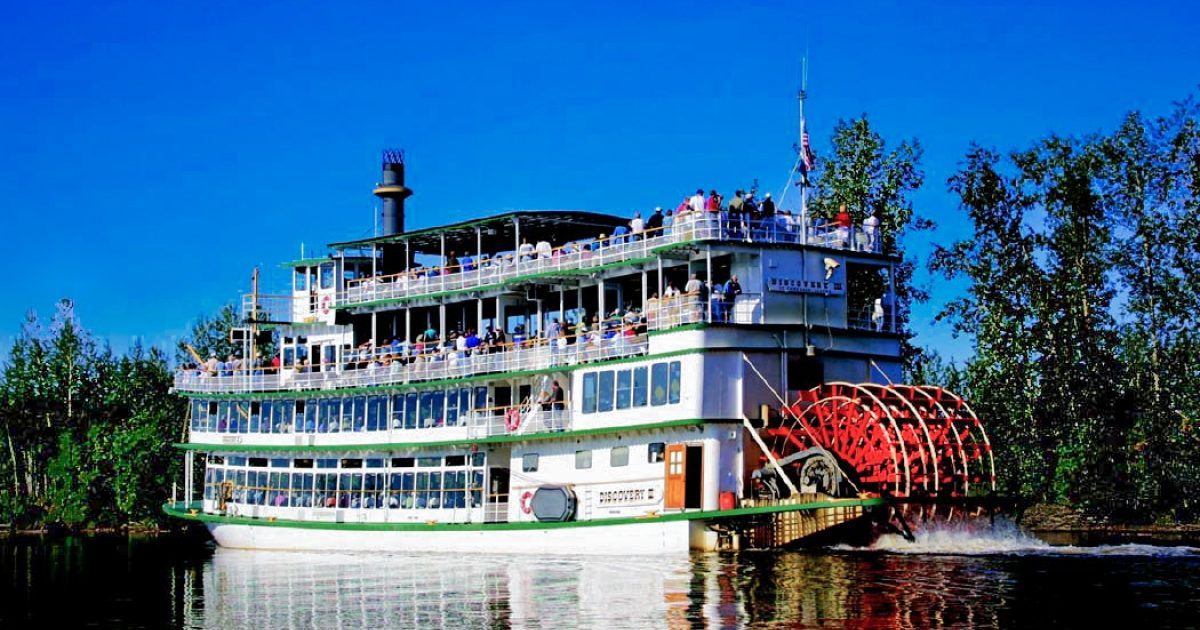
Name and Location: The Riverboat Discovery Sternwheeler cruise is located in Fairbanks, Alaska. It departs from the Chena River landing near Pioneer Park.
History and Significance: The Binkley family has been operating sternwheeler riverboats in Alaska since 1950. The current Riverboat Discovery was built in 1987 and is the fourth generation of boats operated by the family. The cruise offers a glimpse into Alaska’s history and culture.
What to Expect: The three-hour cruise takes passengers down the Chena River, showcasing the scenery and wildlife of interior Alaska. The tour includes stops at a recreated Athabascan village and the home and kennels of the late Susan Butcher, a four-time Iditarod winner.
Visitor Information: Cruises operate daily from mid-May through mid-September. Advance reservations are recommended. The boat is wheelchair accessible and has indoor and outdoor seating.
The Riverboat Discovery is a modern sternwheeler that offers cruises along the Chena River, giving visitors a unique perspective of Fairbanks from the water. Daily sightseeing tours last three hours as the riverboat winds through the heart of the city before heading out into the Interior’s boreal forests and river lands that surround Fairbanks.
Experienced guides narrate the entire trip, sharing stories about the city’s history and highlighting sites along the banks. Expect to see early Native villages, a bush pilot town, Susan Butcher’s dog mushing kennels, and other local landmarks from this unique vantage point.
The most memorable moment of the Riverboat Discovery cruise is when the captain navigates the boat right off the Chena River and onto a small tributary stream. This allows visitors to witness a bush pilot performing an aerial stunt known as a “water landing,” touching down his float plane gracefully alongside the cruise.
Guests can even visit the log cabin village and see the huskies at Susan Butcher’s Homestead kennels during an extended stop. With its mix of history, adventure, and natural scenery, a ride on the Riverboat Discovery Sternwheeler is undoubtedly the best way to quickly get oriented to Fairbanks.
Go Flightseeing Around Denali Mountain
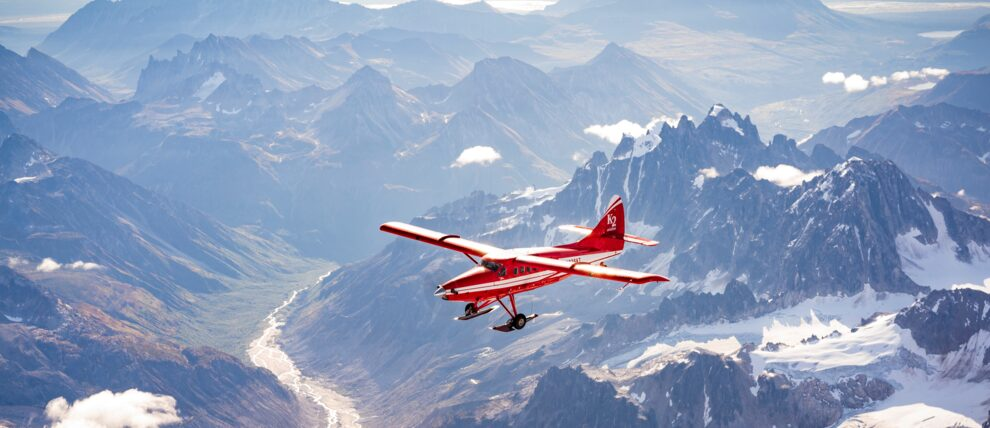
Name and Location: Flightseeing tours around Denali, formerly known as Mount McKinley, depart from various locations in Alaska, including Fairbanks, Anchorage, and Talkeetna.
History and Significance: Denali is the tallest mountain in North America, standing at 20,310 feet. It is a iconic symbol of Alaska and a popular destination for mountaineers and tourists alike. Flightseeing tours offer a unique perspective of the mountain’s grandeur.
What to Expect: Flightseeing tours typically last 1-2 hours and take passengers in small planes with large windows for optimal viewing. The tours circle around the mountain, offering stunning views of the peak, glaciers, and surrounding wilderness.
Visitor Information: Flightseeing tours operate during the summer months, typically from May through September. Prices vary depending on the departure location and length of the tour. Advance reservations are recommended.
Soaring over Alaska’s famed wilderness by small aircraft allows adventurous visitors to see sights that would be impossible to reach otherwise. Numerous flightseeing tour companies operate out of Fairbanks, which serves as the closest major city to Denali National Park and Preserve. Flightseeing planes access areas of the park that lack any roads, including views of North America’s tallest peak.
Most Denali flightseeing trips out of Fairbanks last between two to four hours. Shorter tours provide aerial glimpses of the entire Alaska Range and Denali’s sheer flanks from a respectful distance. Meanwhile, longer expeditions incorporate low-altitude flying over and around the mountain itself for true up-close views.
En route to Denali, planes fly over wide Interior valleys with the Tanana River gleaming below and distant peaks rising in the distance. Arrange a tour in advance for the best chances of clear weather and visibility.
Wander through Pioneer Park
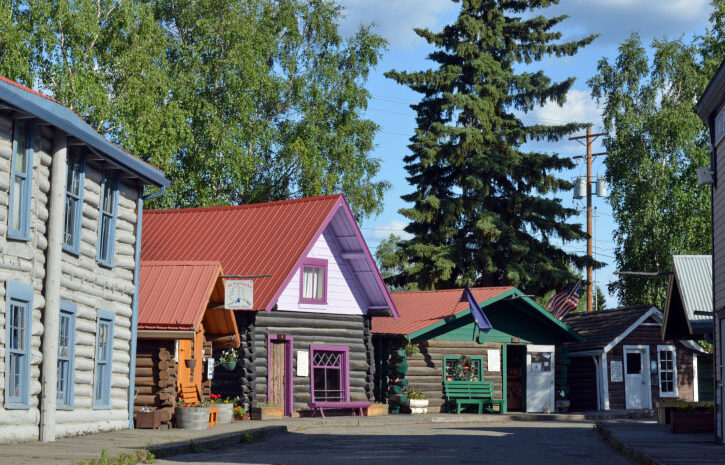
Name and Location: Pioneer Park is located in Fairbanks, Alaska, along the Chena River. It is a 44-acre park that celebrates Alaska’s history and culture.
History and Significance: The park was originally opened in 1967 as Alaska 67 Centennial Exposition to celebrate the 100th anniversary of the Alaska Purchase. After the exposition, it was renamed Alaskaland and later became Pioneer Park. The park features historical buildings and exhibits that showcase Alaska’s pioneer era.
What to Expect: Visitors can explore a variety of attractions, including the SS Nenana sternwheeler riverboat, the Pioneer Air Museum, the Pioneer Museum, and Gold Rush Town, which features recreated buildings from the gold rush era. The park also has amusement park rides, a carousel, and mini-golf.
Visitor Information: Pioneer Park is open year-round, with some attractions and exhibits closed during the winter months. Admission to the park is free, but some attractions charge a fee. The park hosts various events throughout the year, including the Tanana Valley State Fair.
Pioneer Park is a 44-acre historical park along the banks of the Chena River that celebrates early pioneers and life during Alaska’s formative Gold Rush era. Originally the site of the Alaska Centennial Exposition in 1967, the park features a mix of galleries, museums, historical cabins, shops, restaurants, amusement rides, and even a seasonal salmon bake. Visitors can easily spend an entire day wandering the park’s trails and ducking into its various exhibits.
Must-see highlights at Pioneer Park include the Pioneer Museum with numerous Interior Alaska artifacts, the sternwheel riverboat Nenana, the Alaska Centennial Center for the arts, and the Mining Valley with kids gold panning.
The most activity occurs during summer afternoons and evenings as the antique carnival rides draw families looking for classic fairground fun. From history to food to family entertainment, Pioneer Park reveals the local culture and heritage behind Fairbanks’ past and present boom-and-bust fortunes.
Tour the Famous North Slope Oil Fields at the Trans-Alaska Pipeline
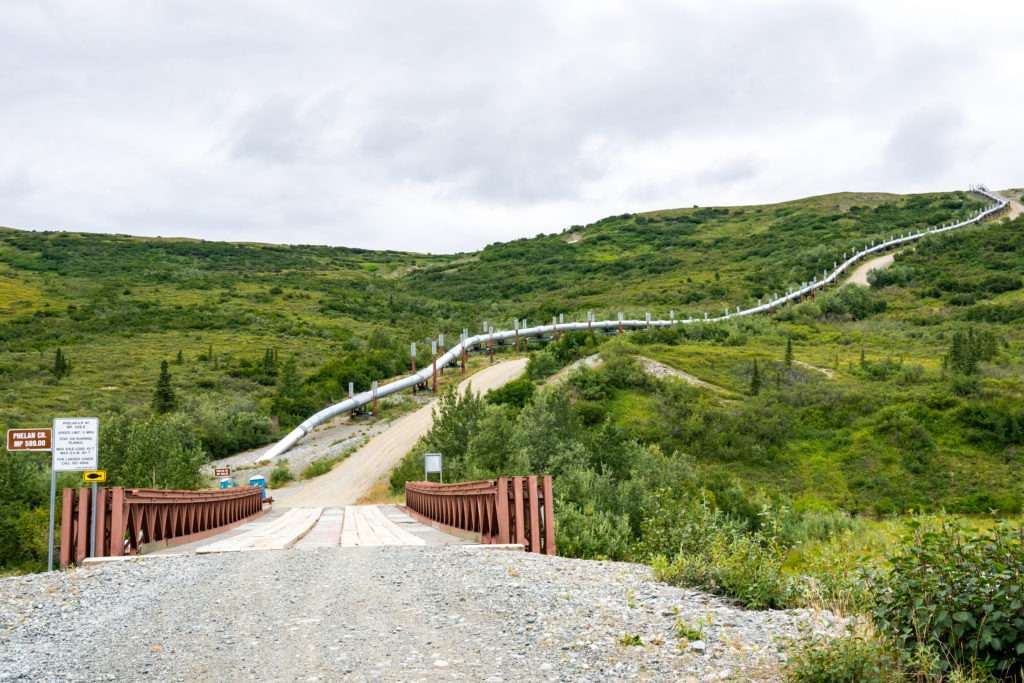
Name and Location: The Trans-Alaska Pipeline and the North Slope oil fields are located in northern Alaska, stretching from Prudhoe Bay on the Arctic Ocean to Valdez on the Prince William Sound.
History and Significance: The discovery of oil at Prudhoe Bay in 1968 led to the construction of the Trans-Alaska Pipeline, which was completed in 1977. The pipeline and the oil fields have played a significant role in Alaska’s economy and have been a source of controversy due to environmental concerns.
What to Expect: Tours of the oil fields and pipeline are available from various companies, typically departing from Fairbanks or Anchorage. The tours offer a unique look at the massive industrial complex and the engineering feat of the pipeline. Visitors can see the oil fields, pump stations, and the Alaska Pipeline viewing station.
Visitor Information: Tours of the oil fields and pipeline typically operate during the summer months and can be full-day or multi-day excursions. Visitors must book tours through authorized companies and follow safety guidelines. The tours involve travel on rugged industrial roads and may not be suitable for all visitors.
The famous Trans-Alaska Pipeline transports crude oil over 800 miles from the northern Alaska oil fields of Prudhoe Bay on the Arctic Ocean down to the year-round ice-free port of Valdez.
This monumental feat of modern engineering allows visitors to drive just outside of Fairbanks to tour the metropolis of oil facilities that keep the pipeline flowing during the cold Interior winters. At the Visitors Center, guests can walk beside massive pipe sections and learn about the complicated systems of heating elements that prevent the crude oil from freezing during transport.
Additionally, tours of the operations center at Pump Station #4 take groups through rooms filled with computers directing pipeline flow as well as instrumentation monitoring it. Guides explain all the technology powering Alaska’s famous “black gold rush.” Any visitor who appreciates mega-scale infrastructure projects or wants to better understand Alaska’s oil economy will find the Pipeline and adjacent museum compelling. No tourist itinerary covering Interior Alaska is complete without seeing the famous pipe and pump workings firsthand.
Relive the Past at Gold Dredge
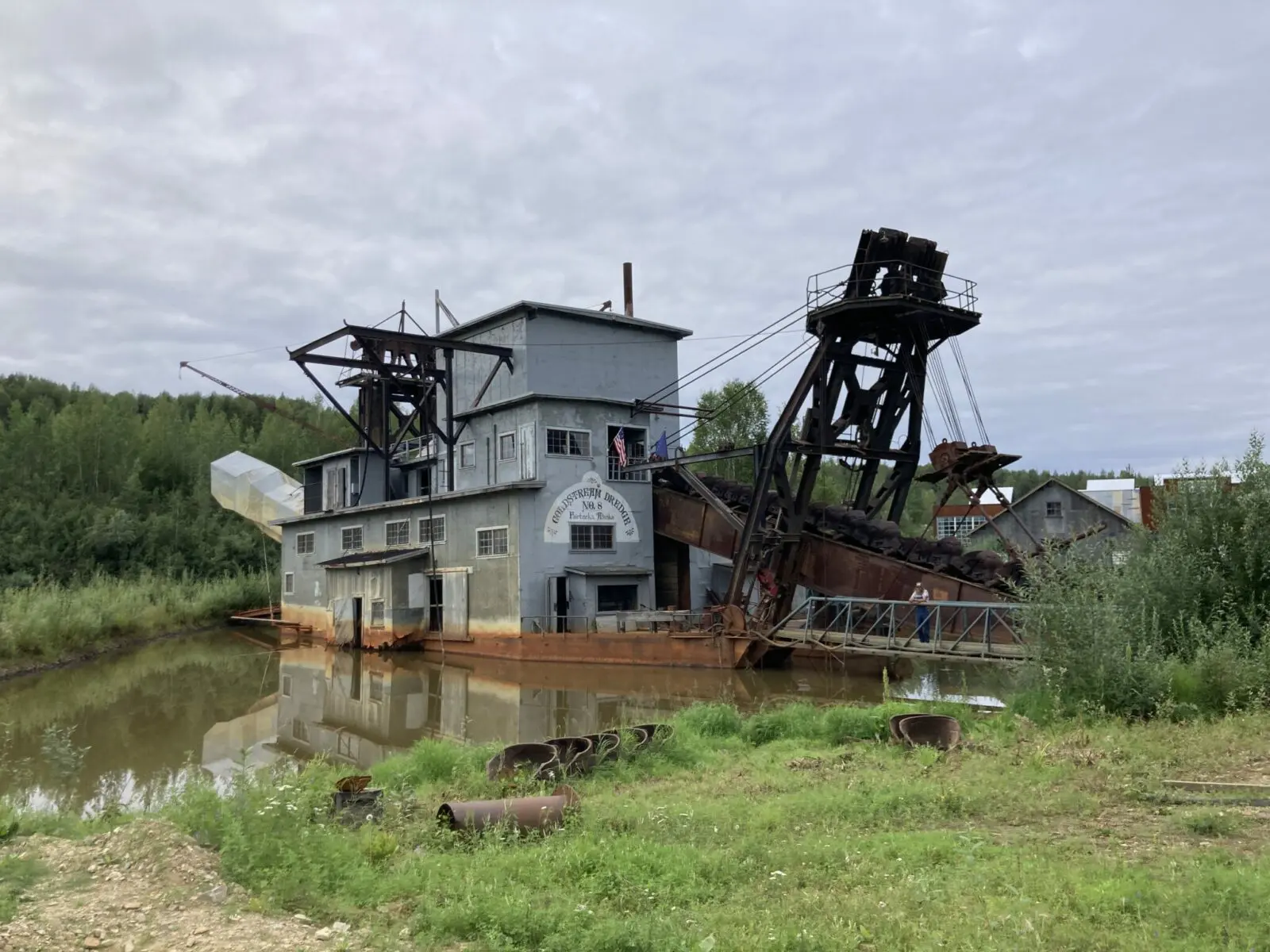
Name and Location: Gold Dredge 8 is a historic gold mining operation located in Fairbanks, Alaska. It is now a tourist attraction that offers visitors a glimpse into Alaska’s gold rush history.
History and Significance: Gold Dredge 8 was built in 1928 and operated until 1959, extracting millions of dollars worth of gold from the Tanana Valley. It is now a National Historic District and serves as an educational and entertainment attraction.
What to Expect: Visitors can take a tour of the dredge, which includes a train ride, gold panning demonstrations, and a walk through the massive dredge. The tour guides provide information about the gold mining process and the history of the gold rush in Alaska.
Visitor Information: Gold Dredge 8 is open during the summer months, typically from mid-May through mid-September. Tours last approximately 2 hours and depart several times daily. Reservations are recommended.
Gold Dredge #8 offers visitors yet another window into Alaska’s Gold Rush era and subsequent mining heritage. This National Historic District runs a converted mining dredge that extracted gold from Interior streams and valleys between 1928 and 1959.
An hour-long tour lets visitors see the massive digging apparatus up close and learn all about its operations from knowledgeable guides. Guests can even try their hands gold panning in the tailings pond with provided equipment.
In addition to the dredge itself, historic log cabins, mineshafts, machinery displays, and a museum round out the attractions. Families especially appreciate the opportunity to pan for gold – who knows what glittering treasures visitors might find swirling in the silt? With both an operational dredge and many preserved relics of the gold mining age, Gold Dredge #8 captures the full prospecting experience that first drew hordes of stampeders north over a century ago.
Immerse Yourself in Music and Performing Arts
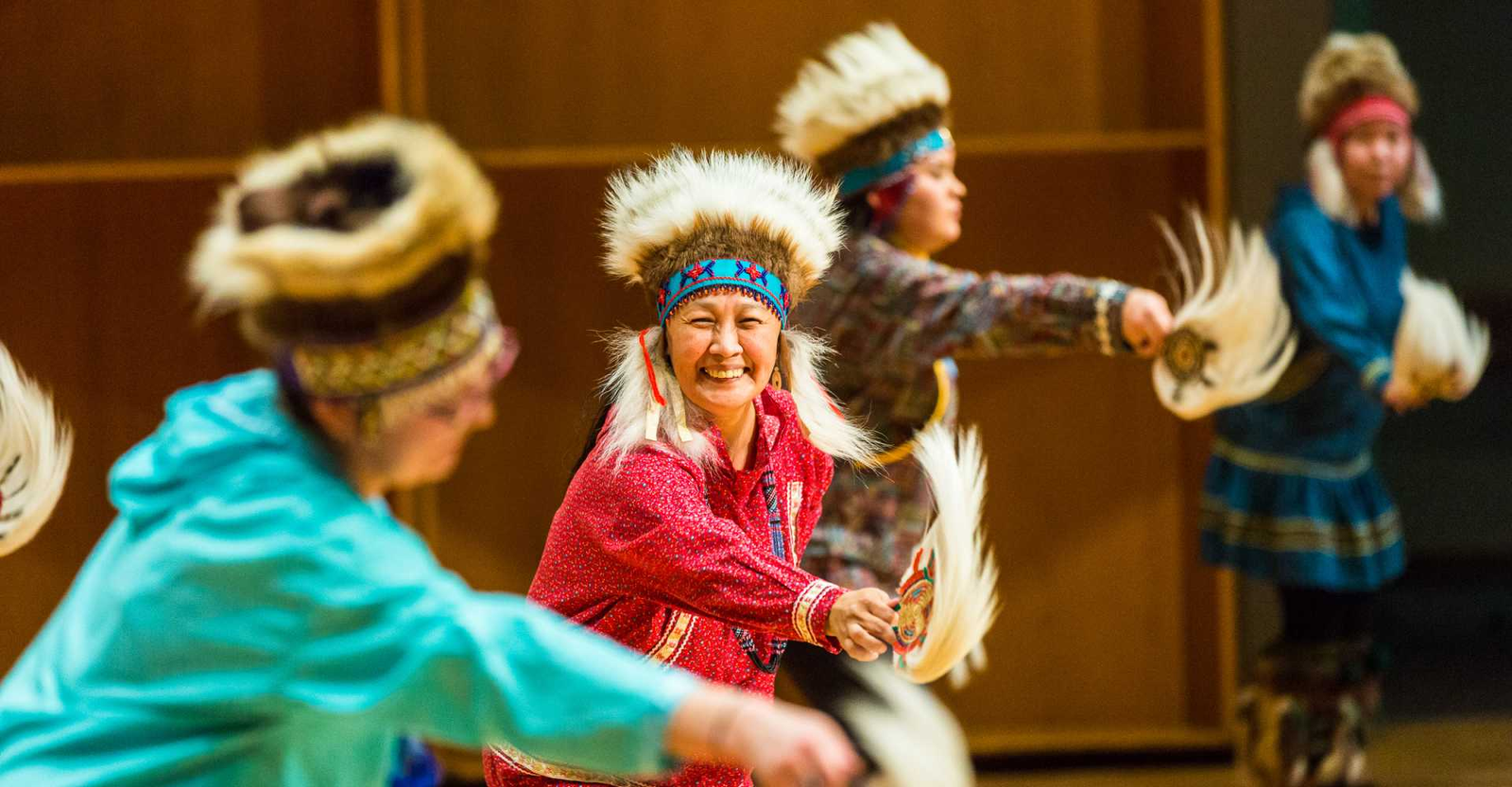
Name and Location: Fairbanks, Alaska has a thriving music and performing arts scene, with various venues and events throughout the year.
History and Significance: The performing arts have been an important part of Fairbanks’ cultural identity since the city’s early days. The Fairbanks Concert Association, founded in 1946, has brought world-class performers to the city for decades.
What to Expect: Visitors can enjoy a variety of music and performing arts events, including concerts by the Fairbanks Symphony Orchestra, performances at the Fairbanks Drama Association and Children’s Theatre, and live music at various venues around town. The University of Alaska Fairbanks also hosts concerts and performances.
Visitor Information: Performance schedules and ticket information can be found on the websites of the individual organizations and venues. Some events may be seasonal or have limited runs, so it’s best to check in advance.
Beyond appreciating historical cabins and artifacts, Fairbanks also supports thriving music and arts scenes that both locals and visitors enjoy. For musical performances ranging from Alaska folk artists to touring bands across all genres, stop by The Pub Station – essentially a pub and intimate concert venue all in one.
Mid to large scale touring concerts also regularly visit the Carlson Center arena for major spectacles from the world’s biggest pop, rap, country, and rock stars. Additionally, the Summer Symphony Series brings orchestral arrangements to outdoor parks around Fairbanks.
For stage theater from resident acting troupes, the historic Palace Theatre in downtown hosts both modern productions as well as seasonal classics like “A Christmas Carol.” Finally, the Morris Thompson Cultural & Visitors Center box office serves as the main outlet for tickets around Fairbanks while also curating rotating art and culture exhibits. Visitors will delight in Fairbanks’ enthusiastic support across all artistic styles and media.
Ride a Historic Sternwheeler Barge on the Chena River

Name and Location: The Discovery II is a historic sternwheeler barge that offers cruises on the Chena River in Fairbanks, Alaska. The cruises depart from the Binkley family’s Steamboat Landing in Pioneer Park.
History and Significance: The Discovery II was built in the 1940s and originally used for hauling freight on Interior Alaska rivers. In the 1970s, the Binkley family acquired the barge and converted it into a passenger vessel for tourism purposes. It has been offering cruises on the Chena River since then.
What to Expect: The Discovery II cruises offer a unique way to experience the beauty of the Chena River and learn about the history of riverboat transportation in Alaska. The cruises feature narration by knowledgeable guides and include stops at a recreated Athabascan village and Susan Butcher’s Trailbreaker Kennel.
Visitor Information: The Discovery II cruises operate from mid-May through mid-September. The cruises last approximately 3.5 hours and depart twice daily. Advance reservations are recommended, and the boat is wheelchair accessible.
While the well-known Riverboat Discovery provides one perspective on Fairbanks from its popular Chena River cruises, visitors can also sail on the 100 year-old Centennial Sternwheeler Barge for a more personal experience. Unlike a traditional boat, this unpowered sternwheeler ferry essentially hitches a ride behind a self-propelled tugboat, sliding gracefully down the calm waters of the Chena.
Constructed of native birch by Interior Alaska pioneers in 1923, the barge carried freight along remote rivers for supplies and gold. Now fully restored for pleasure cruises, it offers a peaceful riverfront viewing platform.
Glide slowly from the historical heart of Fairbanks out towards the verdant boreal forests through which the Chena River flows while onboard guides narrate. Appreciate how early settlers migrated from town to remote villages along Alaska’s waterways before any roads existed. Limited to only 12 passengers per excursion, these dusk wildlife tours allow cruisers to quietly spot moose feeding along the banks.
For an authentic taste of Interior Alaska’s past blended with its striking landscapes, the Centennial Sternwheeler Barge’s ambience and style can’t be beaten.
Marvel at Ice Sculptures at the World Ice Art Championships
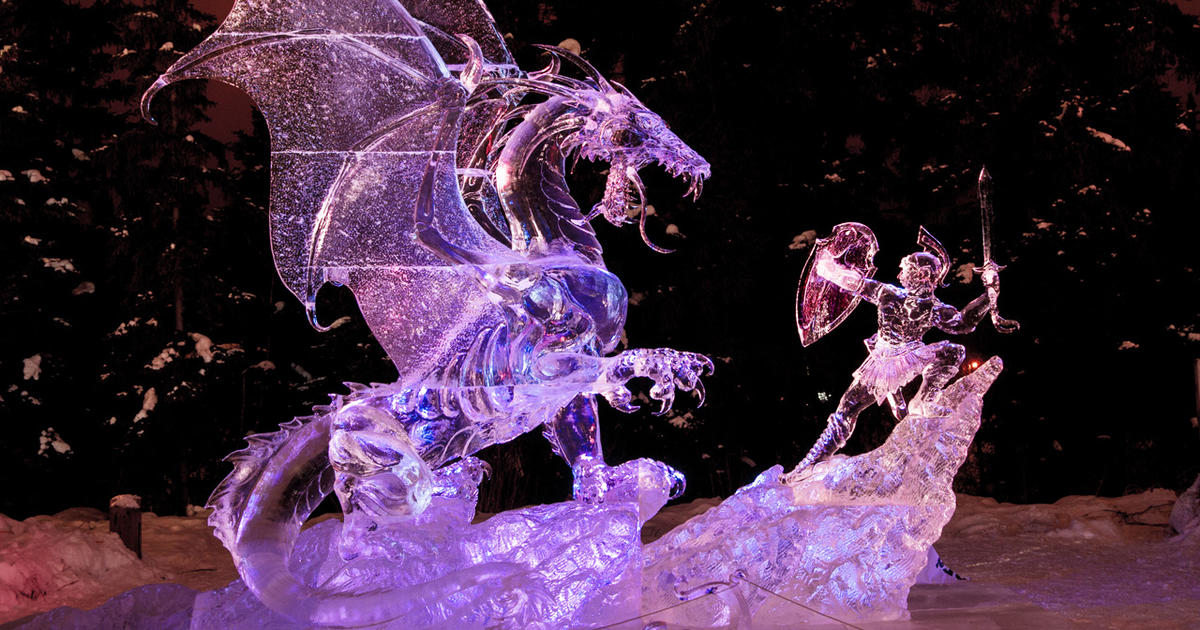
Name and Location: The World Ice Art Championships take place annually in Fairbanks, Alaska at the Ice Art Park.
History and Significance: The championships began in 1989 as a local event and have since grown into an international competition attracting ice sculptors from around the world. The event celebrates the artistry and skill of ice sculpting and showcases the unique properties of ice as a medium.
What to Expect: Visitors can marvel at the intricate and massive ice sculptures created by the competing artists. The sculptures range from whimsical to abstract to realistic, and some are even functional, such as ice bars and slides. The park is illuminated at night for a magical viewing experience.
Visitor Information: The World Ice Art Championships typically take place in late February and early March. The Ice Art Park is open for viewing throughout the competition and for some time afterward, depending on weather conditions. Admission fees apply, and visitors should dress warmly for the outdoor viewing.
Every winter, Alaska’s unforgiving cold becomes an advantage courtesy of the World Ice Art Championships held annually in Fairbanks at the end of February or early March. This globally renowned competition transforms massive blocks of ice into stunning chiseled frozen sculptures that dazzle the senses.
Artists use chainsaws and chisels to carve both precise realistic figures as well as abstract colors and shapes, incorporating dynamic lighting effects after dark. Located at Ice Alaska in downtown Fairbanks, the Ice Park features ice slides and mazes for kids too.
Some sculptures tower multiple stories tall, crafted from naturally frozen blocks of perfectly clear ice harvested from nearby ponds by World Ice Art staff. Visitors bundle up in parkas and boots to wander through this winter wonderland that feels like an icy art gallery crossed between a sparkling alien planet.
Vendors serve up classic fair food like hot chocolate, reindeer dogs, and moose chili bowls to keep audiences warm amidst Alaska’s freezing temperatures. Don’t miss watching these icy masterpieces emerge from shapeless glacial ice into ultra-detailed frozen beauty – it’s a uniquely Alaskan experience.
Soak Away Winter’s Chill at Chena Hot Springs
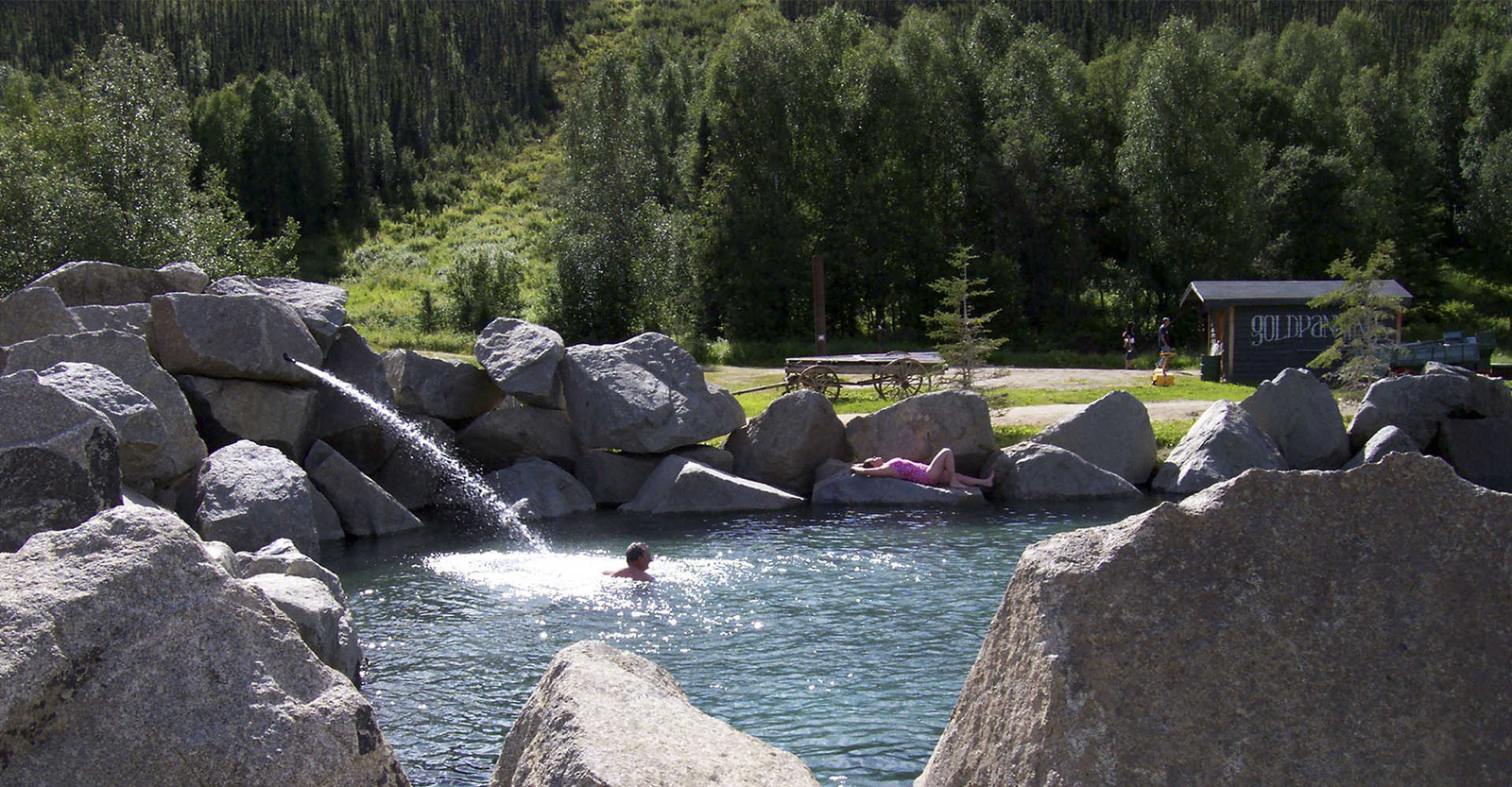
Name and Location: Chena Hot Springs Resort is located about 60 miles northeast of Fairbanks, Alaska. The resort is known for its natural hot springs, which have been used for therapeutic purposes for over 100 years.
History and Significance: The hot springs were discovered in 1905 by gold miners and have been a popular destination for locals and tourists alike ever since. The resort was established in 1911 and has undergone various renovations and expansions over the years.
What to Expect: Visitors can soak in the hot springs, which are maintained at a temperature of around 106°F (41°C). The resort also offers a variety of other activities, including Aurora ice museum tours, dog sled rides, snowmobile tours, and hiking. Lodging options include cabins, motel rooms, and camping sites.
Visitor Information: Chena Hot Springs Resort is open year-round, and reservations are recommended for lodging and some activities. The resort is accessible by car or shuttle service from Fairbanks. Visitors should bring swimwear and towels for the hot springs, and warm clothing for outdoor activities, especially in the winter months.
Located 60 miles northeast of Fairbanks, Chena Hot Springs provides welcome warmth and relaxation after time spent exploring Alaska’s relentless winters. Renowned as one of Alaska’s most accessible hot springs, these mineral-rich waters stay balmy at a constant 98 degrees Fahrenheit.
Guests can soak away in multiple public rock pools of varying sizes, both indoors and out, gazing up at brilliant winter night skies swirling with green auroral displays. The main hot springs complex also incorporates an ice museum carved entirely from snow and ice showcasing eclectic winter-themed sculptures.
Visitors wanting to extend their stays choose from cozy cabins, hotel rooms, and even Mongolian style yurts complete with wood-burning stoves for warming chilly toes at night. Beyond just soaking, Chena Hot Springs Resort additionally offers snowcoach tours into remote backcountry, dog sledding adventures across frozen terrain, ice fishing shacks atop frozen ponds, snowmachine rentals, and more. With plenty of winter activities combined with steaming waters to ward off Alaska’s icy temperatures afterwards, Chena Hot Springs is the premier place in the Interior to stay warm while playing in the snow.
Hike through Colorful Fall Foliage on the Boreal Forest Trails
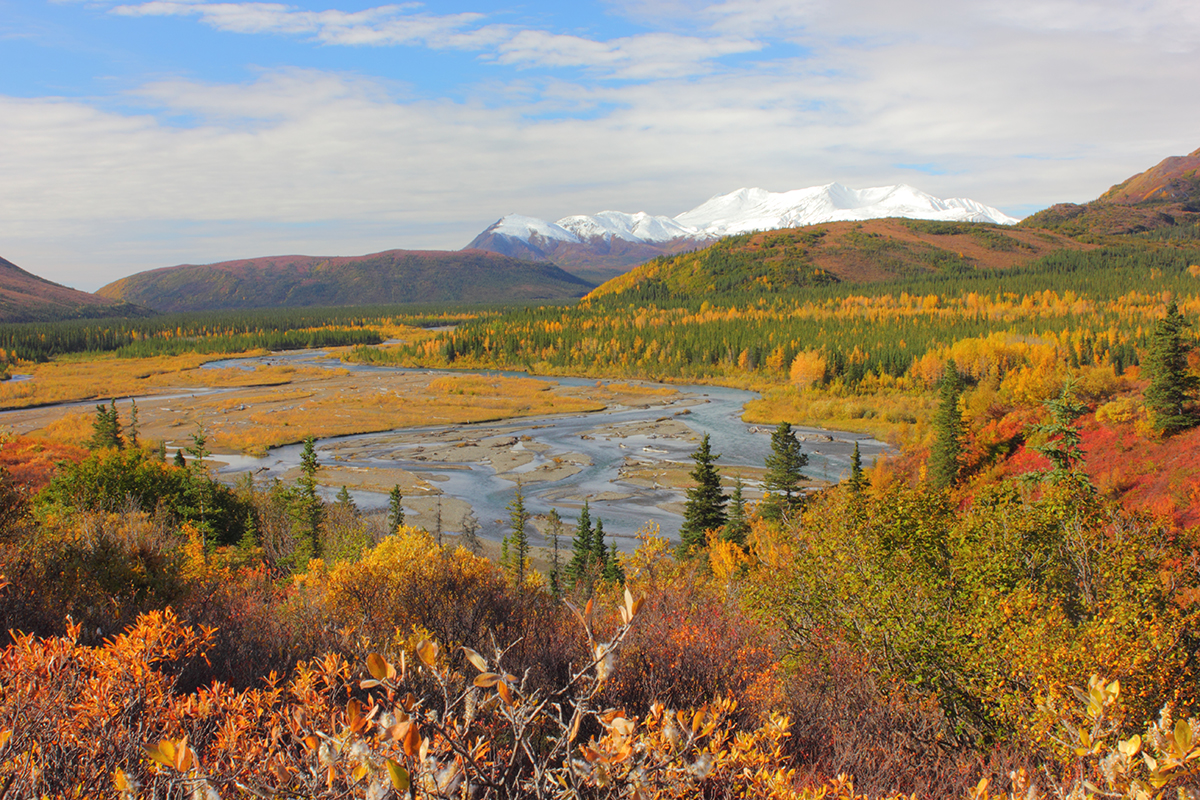
Name and Location: The Boreal Forest Trail is located in the Chena River State Recreation Area, about 30 miles east of Fairbanks, Alaska.
History and Significance: The Chena River State Recreation Area was established in 1967 to preserve the natural beauty and recreational opportunities of the Chena River Valley. The Boreal Forest Trail winds through a representative sample of the Interior Alaska boreal forest ecosystem.
What to Expect: The Boreal Forest Trail is a 1.5-mile loop trail that showcase the beauty of the boreal forest, especially during the fall when the leaves turn brilliant shades of gold and red. The trail is relatively flat and easy to hike, with interpretive signs along the way that provide information about the flora and fauna of the boreal forest.
Visitor Information: The Chena River State Recreation Area is open year-round, but the best time to hike the Boreal Forest Trail for fall colors is typically from late August through early September. The trail is accessible from the Compeau Trailhead in the recreation area. There is a day use fee for the recreation area, and camping is available for a fee.
While many visitors flock to Interior Alaska during summer months chasing the midnight sun only to depart before September, autumn paints Fairbanks’ vast wilderness in intensely pigmented hues for incredible hiking.
Cool, crisp days with vibrant blue skies overhead complement radiant gold, red, and orange stands of quaking aspens bordering The Great Land’s ubiquitous black spruce forests. With boreal foliage at its peak in early September, the trail systems surrounding Fairbanks offer stunning views of this fall color spectacular unique to northern latitudes.
Some of the best and most accessible routes highlighting these turning leaves include the Two Rivers Trail that forms a 4 mile loop across the Chena River, the Angel Rocks Trail traversing tundra ridgelines above tree line, and the Granite Tors Trail ascending into the peaks of the White Mountains.
Numerous longer and more vertical routes also access alpine terrain with far-ranging vantages over the Tanana Valley showcasing carpeted forests of tamarack contrasted against evergreen conifers. Fairbanks’ flawless fall days beckon hikers to witness Mother Nature’s canvases ablaze in vibrant fall hues before the snow flies.
See the Northern Lights Dance Across the Night Sky
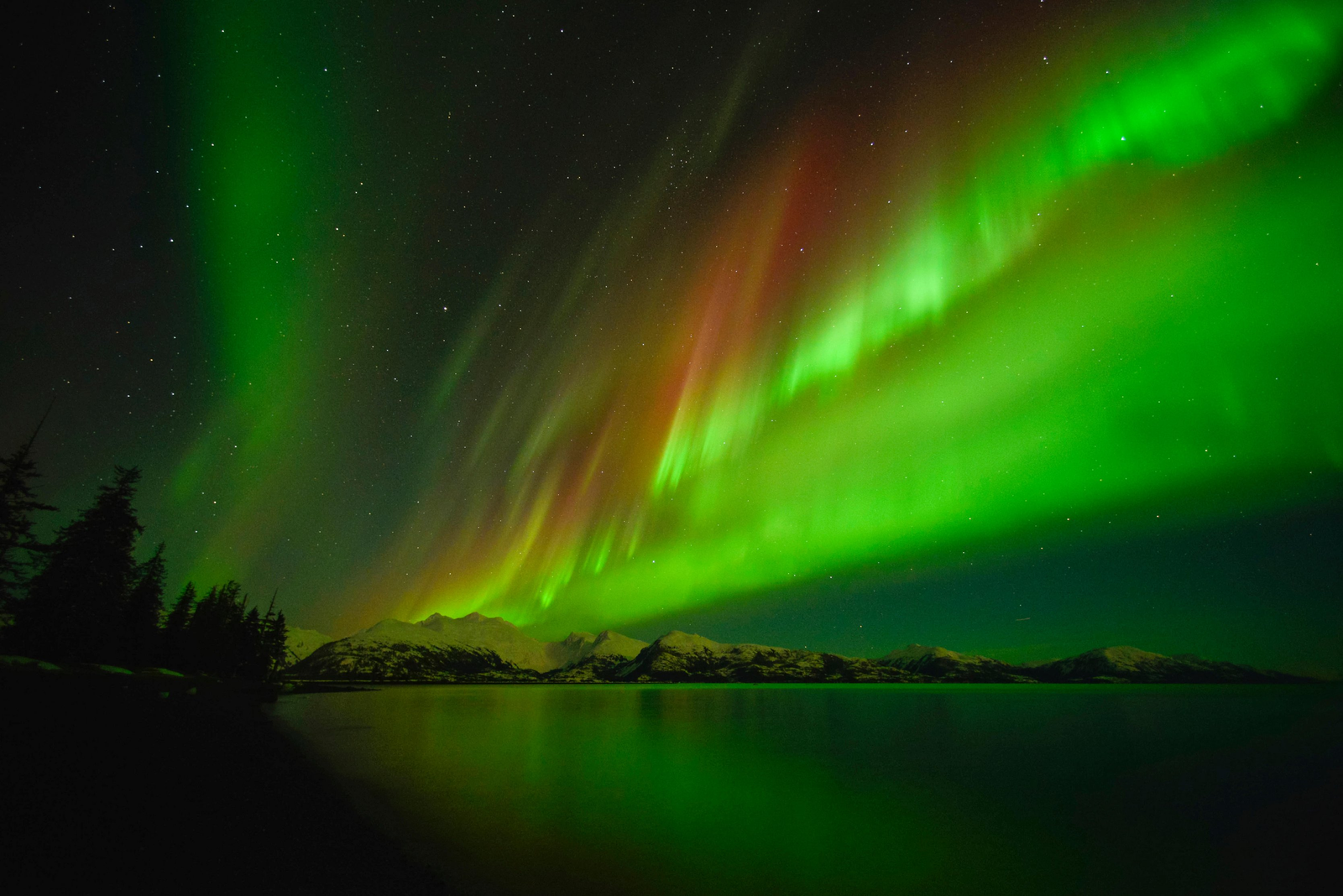
Name and Location: Fairbanks, Alaska is one of the best places in the world to view the Northern Lights, also known as the Aurora Borealis. The city is located within the “aurora oval,” a ring-shaped zone around the North Pole where auroral activity is most frequent.
History and Significance: The Northern Lights have long been a source of fascination and wonder for humans, with various myths and legends surrounding their origin and meaning. In recent years, scientific understanding of the auroras has grown, and they are now known to be caused by the interaction of charged particles from the sun with the Earth’s magnetic field.
What to Expect: Visitors to Fairbanks have a good chance of seeing the Northern Lights if the conditions are right. The best time to view them is from late August through April, during the darker months of the year. The lights appear as shimmering curtains of color in the night sky, usually green, but sometimes with hints of red, blue, or purple.
Visitor Information: There are several tour companies in Fairbanks that offer Northern Lights viewing excursions, which often include transportation to a prime viewing location, warm clothing and gear, and hot beverages. Visitors can also try their luck at viewing the lights on their own by driving to a dark, clear area outside of the city. It’s important to dress warmly and be prepared for cold temperatures, especially in the winter months.
Certainly, the most spectacular natural phenomenon that Fairbanks has to offer visitors is unparalleled views of the magical Northern Lights rippling overhead on clear nights.
Alaska’s location directly under the Auroral Oval means that Fairbanks experiences more optimal night sky conditions for witnessing this celestial showcase than arguably anywhere else on the planet. Between August and April when hours of winter darkness dominate, vibrant curtains of green, pink, purple, and blue light can suddenly flare to life and shimmer overhead.
While the Northern Lights remain unpredictable, late nights with minimal light pollution offer the best chances of experiencing these mysterious openings in Earth’s magnetosphere. Many local operators lead overnight Aurora-viewing tours or offer transportation away from Urban Glow.
Photographing the Auroras using long exposure times creates unforgettable keepsakes too. Otherworldly and ethereal, observing the Northern Lights’ silent dance across Alaska’s vast star-strewn skies leaves an everlasting sense of wonder and scale.
Conclusion
With gold rush relics, wild frontier heritage sites, dazzling seasonal spectacles, vibrant art offerings, and access to stunning wilderness, Fairbanks truly serves as the golden heart of Alaska tourism. Visiting between May and September captures summer’s midnight sun energy, fall’s extravagant colours, and winter’s earliest Northern Lights displays all in one extended stay.
No matter your interests, Fairbanks invites adventure-seekers, culture mavens, history buffs, nature lovers, and pedestrians of all ages to discover the best of Alaska’s second-largest city and its surrounding landscapes. These 12 attractions and activities give a perfect sampling of interior Alaska’s unique travel experiences for an unforgettable northern getaway during any season.

